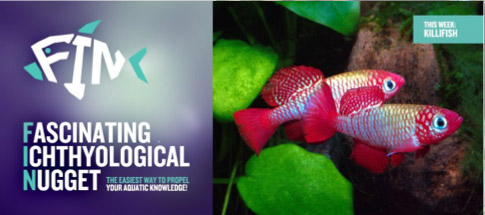Killifish

Funny though it seems, fishes can exist in areas where water is only seasonally available. Related to livebearers, 'annual' killifishes (their name being derived from the Dutch word "kilde", meaning small creek, puddle) have evolved a breeding cycle which involves laying eggs that need a dry period to incubate before hatching. These species, are some of the most stunningly beautiful fish but live no longer than nine months and are one of the shortest-living vertebrates known. Examples include the African genus Nothobranchius and South American genera ranging from the cold water Austrolebias of Argentina and Uruguay, to the more tropical Gnatholebias, Pterolebias, Simpsonichthys and Terranatos. When the rains come, the new pools are quickly full of fish that grow rapidly and then leave the next generation of eggs in the sand. As rainfall can be unpredictable, some eggs only hatch after a second wetting – this ensures that should things dry out again too early, reinforcements are waiting to swing into action.
Another interesting fact about one particular species is, although killifishes are generally well distributed globally, being found mainly in fresh or brackish waters in the Americas, and also in southern Europe, Africa, the Middle East and Asia, and on several Indian Ocean islands, the only natural habitat of the Devils Hole pupfish (Cyprinodon diabolis) is 'Devils Hole', Nye County, Nevada in the US: a cavern at least 300 feet deep, branching out from a small opening at the surface, only approximately 6 feet by 18 feet wide; where these caves were believed to be formed over 500,000 years ago and contain water at a temperature of 33°C!



